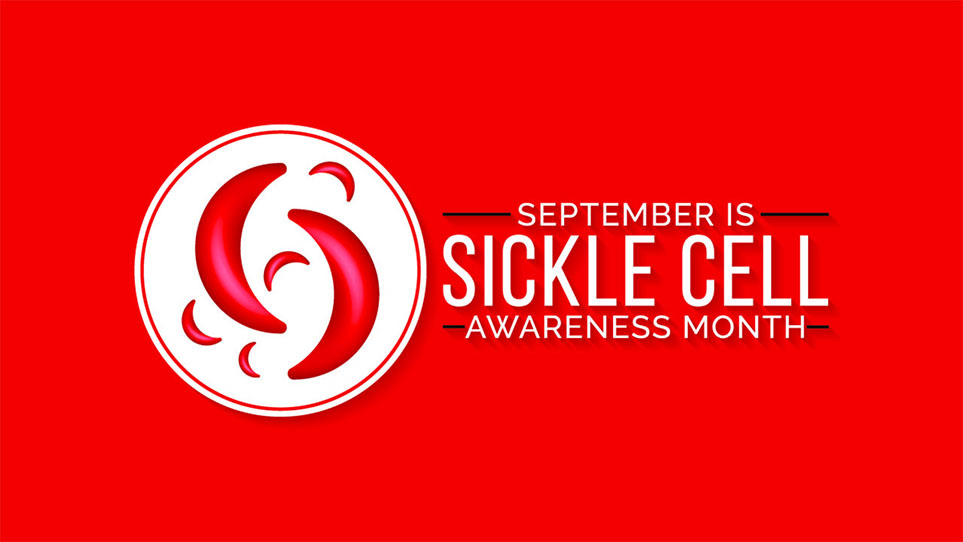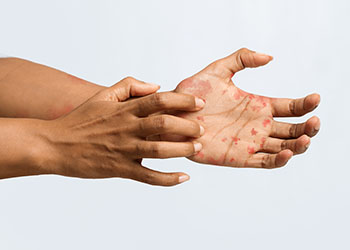It can’t hurt me, it’s only sickle cell trait. The hidden dangers of SCT

Maddy Crabbe — Medical Writer, Remedica Communications
September is World Sickle Cell Awareness Month.1 The pathophysiology of sickle cell disease is well known. It involves red blood cells (RBCs) which play a central role in moving oxygen from the lungs to the tissues of the body.2 With sickle cell disease, abnormal hemoglobin polymerizes in certain conditions, such as being at high altitude, dehydration, cold weather and strenuous exercise.3 Fibrous precipitates formed by the aggregated hemoglobin molecules distort RBCs, promote hemolysis, and lead to occlusion of peripheral blood vessels.2,4 This can compromise the supply of oxygen to various tissues, with the potential to lead to devastating consequences, including stroke, pulmonary hypertension and avascular necrosis.5
As the weather gets colder in the Northern Hemisphere, more people with this genetic disease are at risk of developing one or more of sickle cell’s life-threatening complications.3 When people are exposed to cold temperatures, their peripheral blood vessels constrict, resulting in greater deoxygenation of blood in these vessels. In this situation, RBCs also spend longer in the deoxygenated part of the circulation.3 Low oxygen levels in patients with sickle cell disease provide an environment for abnormal hemoglobin molecules to aggregate and distort RBCs, and lead to the complications mentioned above.2,6
But it’s not just those will sickle cell disease who are at risk. There are people who don’t have sickle cell disease but can pass on the alleles that cause it,7 a condition known as sickle cell trait (SCT). Individuals with SCT have inherited one abnormal allele of the Hemoglobin Subunit Beta gene from either one of their parents.
For people with SCT, more than 50% of their red blood cells have normal morphological characteristics,8 and the oxygen-carrying capacity of their hemoglobin is not compromised. However, certain conditions can increase the percentage of abnormal hemoglobin in the circulation, such as dehydration, hypoxia, hyperthermia, hypothermia, inflammation and extremely high levels of physical intensity.9,10 In these instances, the percentage of their normal blood cells can decrease, putting them at risk of sickle cell complications.
I have SCT. My dad was also a carrier, and my mum has sickle cell disease. There was a 50% chance that I would get the disease, but an amniocentesis performed during my mum’s pregnancy revealed that I didn’t. Prenatal screening for sickle cell is offered in some countries to find out whether a baby has inherited the blood disorder.
SCT is usually asymptomatic, so most people with it are not aware of their status. An estimated 300 million worldwide have the trait, but only 16% of affected individuals of childbearing age are aware of their hemoglobin genotype.9
Scientific literature has historically suggested that SCT is a benign condition, but it is increasingly clear that this is not the case. SCT has been linked to hematuria, chronic kidney disease, sudden death due to exertion, glaucoma, rhabdomyolysis, splenic infarction and other clinical phenomena.9,10 One famous case of SCT-associated splenic infarction is the story of Ryan Clark, a former professional American footballer. Clark was unaware of the dangerous position SCT would put him in when he played a game in Denver, Colorado, a city that is 5,280 feet above sea level.11,12
During the game he experienced a sharp pain in his left side that turned out to be a splenic infarction.11,13 Medical professionals believed that the high-altitude, low-oxygen environment created the perfect conditions for Clark’s SCT to become overtly problematic.14
A single unfortunate incident should not be enough to move SCT from the “benign” category into the “pathologic” one, but a study of American football players found that patients with SCT had a 37-fold higher risk of exertional death than their counterparts without the trait.15 Another study found that there is a 54% higher chance of developing rhabdomyolysis during physical exertion in the presence of SCT.16 In recognition of our increased knowledge in this therapy area, screening policies such as that of the National Collegiate Athletic Association in the US are being used to identify people at risk of exertional death because of SCT.17
Both sickle cell disease and SCT can be diagnosed with a simple blood test, and genetic counseling is being implemented in some countries to reduce the prevalence of the trait and disease.9,18
Life-threatening complications of SCT are comfortingly rare but this is no reason not to follow guidelines, such as making sure you stay hydrated during physical exertion, pausing to catch your breath in periods of intense exercise, and being conscious of situations where access to oxygen may be reduced, for example during high altitude trekking. Whether you have sickle cell disease or SCT, being aware of the signs of a complication and seeking medical assistance at the earliest opportunity could one day save your life.
REFERENCES
- Sickle Cell Society. Sickle Cell Awareness Month. Available from: https://www.sicklecellsociety.org/sicklecellawarenessmonth/. Last accessed September 2022.
- Kuhn V, et al. Red blood cell function and dysfunction: redox regulation, nitric oxide metabolism, anemia. Antioxid Redox Signal. 2017;26(13):718-742.
- Tewari S, et al. Environmental determinants of severity in sickle cell disease. Haematologica. 2015;100(9):1108-1116.
- Connes P, et al. The role of blood rheology in sickle cell disease. Blood Rev. 2016;30(2):111-118.
- Mulumba LL, Wilson L. Sickle cell disease among children in Africa: An integrative literature review and global recommendations. Int J Africa Nurs Sci. 2015;3:56-64.
- Riley TR, Riley TT. Profile of crizanlizumab and its potential in the prevention of pain crises in sickle cell disease: evidence to date. J Blood Med. 2019;10:307-311.
- WIRED. From 1918 autopsy, a first glimpse of sickle cell — and a warning. Available from: https://www.wired.com/2010/11/from-a-1918-autopsy-a-first-glimpse-of-sickle-cell-and-a-warning/. Last accessed September 2022.
- Khaled SAA, et al. Hematological, biochemical properties, and clinical correlates of hemoglobin S variant disorder: A new insight into sickle cell trait. J Hematol. 2022;11(3):92-108.
- Ashorobi D, et al. Sickle Cell Trait. Available from: https://www.ncbi.nlm.nih.gov/books/NBK537130/?report=classic. Last accessed September 2022.
- American Society of Hematology. Available from: https://www.hematology.org/education/patients/anemia/sickle-cell-trait. Last accessed September 2022.
- The Washington Post. Ryan Clark says Tevin Coleman must ‘do what’s best for you and your family’. Available from: https://www.washingtonpost.com/news/sports/wp/2016/10/05/ryan-clark-says-tevin-coleman-must-do-whats-best-for-you-and-your-family/. Last accessed September 2022.
- National Jewish Health. Climate & High Altitude. Available from: https://www.nationaljewish.org/about/foreign-national-program/living-in-denver/climate-high-altitude. Last accessed September 2022.
- DNVR. Source close to John Brown says sickle cell trait won’t keep him out of Denver, doctor weighs in. Available from: https://thednvr.com/source-close-to-john-brown-says-sickle-cell-trait-wont-keep-him-out-of-denver-doctor-weighs-in/. Last accessed September 2022.
- The Washington Post. Near-death experience at heart of Ryan Clark’s game-day drive. Available from: https://www.washingtonpost.com/news/football-insider/wp/2014/10/03/near-death-experience-at-heart-of-ryan-clarks-game-day-drive/?noredirect=on. Last accessed September 2022.
- Harmon KG, et al. Sickle cell trait associated with a RR of death of 37 times in national collegiate athletic association football athletes: a database with 2 million athlete-years as the denominator. Br J Sports Med. 2012;46(5):325-330.
- Nelson DA, et al. Sickle cell trait, rhabdomyolysis, and mortality among U.S. army soldiers. N Engl J Med. 2016;375(5):435-442.
- Tarini BA, et al. A policy impact analysis of the mandatory NCAA sickle cell trait screening program. Health Serv Res. 2012;47(1pt2):446-461.
- WebMD. What to know about a sickle cell test. Available from: https://www.webmd.com/a-to-z-guides/what-to-know-about-sickle-cell-test. Last accessed September 2022.



